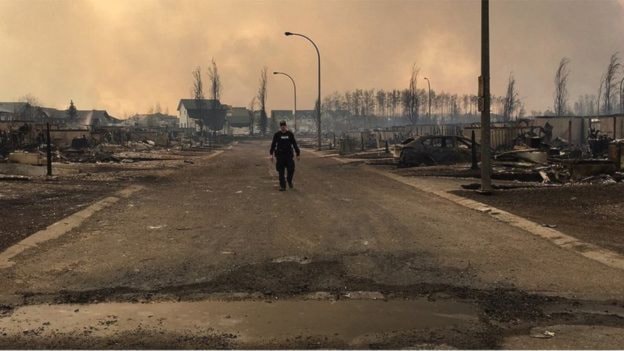Last week’s ferocious wildfire that torched areas of Fort McMurray, forced the evacuation of some 88,000 residents and destroyed 2,400 structures may be a foreboding of what’s to come during this year’s fire season.
The weather system handed Western Canada a start date and it was early and nasty. For B.C., the season started on April 18 with the Beatton Airport Road fire 45 kilometres from Fort St. John and now 15,000 hectares in size.
Similarly, the 2015 season kicked off in early May with the Little Bobtail Lake fire southwest of Prince George which burned 25,569 hectares resulting in evacuation orders. As the season progressed and worsened, firefighters came to help from other provinces as well as Australia, South Africa and the U.S. At the height of the season, there were 2,500 personnel working both the fireline and in support positions. In total, 1,144 homes were evacuated and 50 structures destroyed.
Last year there were an above-average number of fires started and hectares burned, as well as significant impacts on people. In total, there were 1,836 wildfires in B.C. burning 280,465 hectares (24,787 hectares burned on the south coast) and costing $277 million in firefighting costs, torching the original budget of $63 million.
Lightning accounted for over two-thirds (1,234) of the fires started while 602 preventable fires were started by people.
Northern Saskatchewan too suffered last year where more than 1.7 million hectares burned and 13,000 people were evacuated.
Critical conditions coming together at the right time with the right balance are causing the destructive wildfires we’re seeing. On the heels of 2015 (the hottest year on record), this year’s potential for wildfires was set up last fall as we went into a warmer, drier winter driven by a strong El Nino. Fuel in the form of fallen trees, brush and grass on the forest floor became tinder dry. Less rain and a low snow pack starved regions of moisture. Then this year we had the hottest January and the hottest April on record. All it would take would be a lightning strike or a careless individual to spark the flame.
Since 1825 when the Great Miramichi fire in New Brunswick killed 300 and burned over a million hectares, Canada has had some really devastating fires. The mother of all of them was the Chinchaga fire in 1950 which swept through northern B.C. and Alberta, burning between 1.4 million and 1.7 million hectares. It created the great smoke pall that blanketed eastern North America and Europe. When it reached the Aleutian Islands, the haze had circled the globe. It was the largest recorded fire in North American history.
According to a report covering a 2009 research forum by BC Ministry of Forests “Climate Change and Fire Management Research Strategy”, on average wildfires threaten 20 communities and 70,000 people annually in Canada and fire management costs Canada some $700 million a year. But this will rise as global warming extends the wildfire season. In B.C. fire records have shown that the wildfire season has been increasing by one or two days a year since at least 1980.
Fire is a natural part of the successive growth of forests and they have their own ‘personality’ whether they be ‘runners’ on the ground gobbling up grassland and bush or ‘jumpers’ torching the crowns of trees as embers race ahead. The danger is when they become interface fires threatening communities. The massive Fort Mac fire was dangerous in its rapid expansion into the city.
In the coming months of future analysis, many new policies will emerge on proactive fire management and prevention. But what is unsettling is the aggressiveness of wildfires so early in the season.
